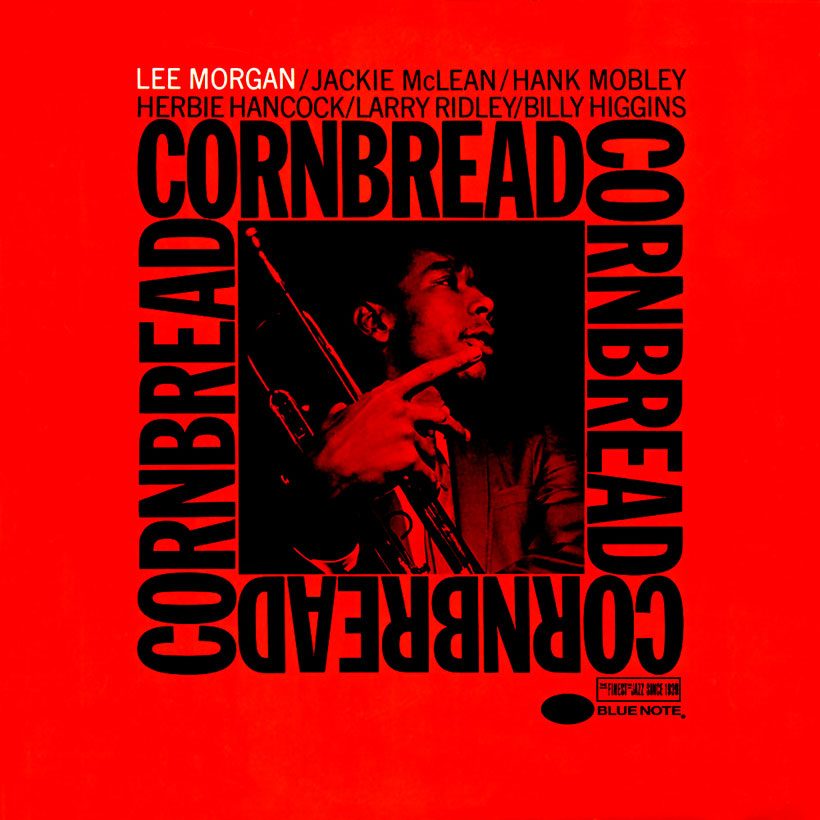‘Cornbread’: Lee Morgan’s Tasty Blue Note Classic
Building on the success of ‘The Sidewinder,’ ‘Cornbread’ revealed Lee Morgan to be a formidable composer as well as a dazzling trumpeter.

Philadelphia horn-blower Lee Morgan had been with Blue Note Records for almost nine years when he recorded Cornbread, his 12th album for the label, in a single session held on Saturday, September 18, 1965.
Originally from Philadelphia, Morgan was a precociously talented trumpet prodigy who made his debut recording at the tender age of 18 for Alfred Lion’s famous label. While pursuing a solo recording career, he also joined the ranks of drummer Art Blakey’s celebrated group, The Jazz Messengers, in 1958, appearing on the band’s classic album Moanin’, which was released the same year. He stayed with The Messengers until 1961, by which time he had established himself as a noteworthy composer, and then in 1963 recorded an album called The Sidewinder for Blue Note whose title song, with its jaunty backbeat and catchy horn motif, would put the 25-year-old trumpeter into the US pop charts the following year.
Just under two years and five albums later, Lee Morgan returned with producer Alfred Lion to Van Gelder Studio, at Englewood Cliffs, New Jersey, to record what became Cornbread. For the session, Morgan fronted a stellar studio band that was a sextet comprised of two saxophonists – Hank Mobley (tenor) and Jackie McLean (alto) – plus pianist Herbie Hancock, bassist Larry Ridley, and drummer Billy Higgins.
A dazzling trumpet player
At 35, Hank Mobley – an ex-Jazz Messenger who had also played with Miles Davis – was the oldest musician on the session, while, at 27, Morgan was the youngest. But between them, they had bags of experience. Indeed, Herbie Hancock, who was then currently employed in Miles Davis’ groundbreaking post-bop quintet, had also made his mark as a leader at Blue Note with five albums, including the then recently released Maiden Voyage.
Cornbread’s nine-minute-long title track was the first of four songs composed by the trumpeter on the album. It was driven by a boogaloo-style groove created by Ridley, Higgins and Hancock that had been the salient feature of “The Sidewinder.” Rendered in a finger-clicking soul-jazz vein, the tune also had a catchy harmonized horn line and featured some blazing trumpet improv from Morgan. Hank Mobley takes the second solo, Jackie McLean the third, followed by Herbie Hancock with an inventive passage of busy extemporization.
With the commercial title track out of the way (“Cornbread” was issued as Morgan’s follow-up single to “The Sidewinder”) the trumpeter exhibits a more progressive approach on “Our Man Higgins,” a musical portrait of the session’s sticksman. It’s characterized by ascending and descending chromatic lines before evolving into hard-swinging slice of advanced hard bop where the soloists get to show off their virtuosity.
A gentle bossa nova feel defines the lovely “Ceora,” which begins with Hancock’s piano gliding over a simmering beat before the horns announce an elegant harmonized theme. The solos by all the horn players are sublime, and Hancock’s turn in the spotlight is distinguished by some scintillating improv.
A formidable composer
On the slow romantic ballad “Ill Wind,” a 1934 Harold Arlen-Ted Koehler tune that was recorded by both Frank Sinatra and Ella Fitzgerald in the 50s, Morgan plays his horn with a mute, creating a slightly spiky but forlorn sound. Mobley and McLean frame the trumpeter’s solo with cool saxophone harmonies while Hancock contributes glistening piano accompaniment.
Cornbread’s fifth and final track, “Most Like Lee,” is a blithe swinger with a swaggering horn theme driven by Larry Ridley’s walking bass and Billy Higgins’ crackling drum work. McLean shows his class with a graceful solo, followed by Morgan (this time without his mute), then Mobley, in whose wake comes the impressive Hancock, with notes cascading from his piano. The band drop out to allow Larry Ridley a moment in the spotlight, though Higgins keeps the rhythmic pulse going in the background before a brief reprise of the main theme.
Despite sitting on the shelf for two years before it was released, Cornbread didn’t sound stale when it hit the shelves in 1967. Though following the commercial success of The Sidewinder (1964) and the artistic depth of Search For The New Land (1966), arguably his two greatest albums, the album showed that as well as being a dazzling trumpet player, Lee Morgan had blossomed into a formidable composer.













charles liles
August 14, 2021 at 2:56 pm
One significant part of Morgan’s musical playing history left out is that: at seventeen, he was playing with Dizzy Gillespie’s UN Band.